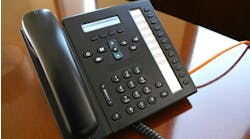Latest from Michel
Sponsored
As computing and communications power gets better and cheaper, more and more devices will carry microprocessors. This is the Internet of Things (IoT). It will have profound implications on everything we do. Here are eight ways it will impact your business.
1. Water monitoring: Sensors will be able to monitor water usage throughout the home based on vibrations in the piping. Computer algorithms will differentiate between taps, showers, toilets and appliances. With a smart phone, homeowners will be able to monitor water usage by fixture and appliances. This isn’t science fiction. It exists today.
Homeowners will be alerted to build-ups in drains before a stoppage occurs. When a water leak is present, homeowners will know its location and severity. This will make life easier for the do-it-yourselfer and professional alike.
Other sensors will monitor water quality, sensing and tracking dissolved solids, pH, acidity, Sulphur levels, chlorination, water hardness, and more. Expect greater demand for water purification systems to result and real time data on the effectiveness of the filtration or treatment. Water filter performance and degradation will also be tracked and homeowners will be alerted when it’s time for a replacement.
2. Irrigation: Sprinkler and irrigation systems usage will take soil moisture, humidity and weather forecasts to determine when to water the lawn. Again, this is not science fiction. It’s here today and has demonstrated 90% reductions in water usage. Combine the irrigation with rainwater capture systems and water usage can be future reduced.
3. Storage water heater temperature: Undoubtedly, there will be systems that will attempt to save energy by adjusting storage water heater temperature around homeowner usage patterns. Given the potential for the formation of Legionella at reduced storage temperatures, these will be bad ideas requiring consumer education by the plumbing industry.
4. Appliance optimization: With the IoT, water and energy using appliances will present homeowners with time of day usage options that reduce the amount of water heating at the appliance, provide the least interruption to homeowner hot water usage patterns, and optimize electricity use based on utility load factors and predicted demand. The net result is less energy usage and smaller storage tank requirements.
5. Maintenance alerts and predictive failure: Any product that uses electricity will be monitored. Based on electricity usage and component temperatures, homeowners will be alerted about the need for maintenance and the potential for failure (as electricity using components near failure, they get hotter). On service calls, plumbers will be able to access product history, including prior maintenance and repairs. Inevitably, software will analyze this data to suggest likely repairs, reducing the need for experienced personnel to performed diagnostics and troubleshooting.
Selecting a plumber could likewise be controlled by the home automation system/network the homeowner uses or a home automation app the homeowner prefers.
6. Parts ordering and service call distribution: The unsettling aspect of the IoT for plumbing contractors will be the ability of homeowners to order parts and the opportunity for “networks” to distribute service calls to favored contractors. For example, a water filter might be nearing the time for replacement. The homeowner is alerted on a computer or smart phone with a helpful “buy” button as part of the replacement. Clicking on this might take the homeowner to Amazon, Google, or a specific over-the-counter national distributor with all of the information needed to order the exact replacement filter transmitted. The homeowner clicks to buy and can install it himself or use a plumber for labor only. Ouch.
Selecting a plumber for maintenance or service could likewise be controlled by the home automation system/network the homeowner uses or a home automation app the homeowner prefers. The app or the home automation system will recommend plumbing contractors. The recommendations may be based on review site scores or they might follow promote contractors who pay the network or app for preferred treatment. In this case, the app would control the call and the contractor’s livelihood would be at the mercy of the app. Yikes.
7. Inventory and tool management: The IoT will also benefit plumbing contactors. Sensors will monitor inventory and automatically in the trucks and shop, reordering each night or whenever necessary. In time, software will be able to monitor inventory usage and optimize inventory levels to minimize capital tied up in material. Similar to the monitoring of home appliances, tools will be monitored with a running list of the tool, maintenance requirements, and locations.
8. Vehicle management: Computers already monitor and optimize a significant amount of vehicle operations. This will only increase with the IoT. The biggest noticeable difference will be the communications. Contractors will be able to track vehicle performance, wear and tear, and choose optimal times for routine maintenance based on conditions, rather than mileage.
GPS software like Google Maps will already optimize a route based on real time traffic. As the IoT’s becomes ubiquitous, trucks operating in urban areas will be able to identify available parking based on sensors embedded in the pavement.
Security will be enhanced with dashboard cameras and security cameras. Real time feeds from the cameras will be stored locally and periodically sent to the cloud where they can be stored for a predetermined period of time and accessed from anywhere.
The unimaginable awaits
Without question, the IoT will impact plumbing contractors in ways unimaginable today. Much of the change will be gradual and almost unnoticed, but some will be sudden and disruptive. Survival and prosperity will depend on the ability of individual contractors to adapt to the new world.
For this reason, it is important for contractors to attend industry trade shows and other events to monitor and track the changing technology to get a jump on the competition. Also, get involved with associations and other contractor groups where industry visionaries and thought leaders will help contractors identify, predict, and adjust to the future.
Matt Michel is CEO of the Service Roundtable, contracting’s largest business alliance. Learn more at www.ServiceRoundtable.com or call 877/262-3341 and ask for a success consultant to give you a complementary tour of the password protected portions of the website.
Matt Michel | Chief Executive Officer
Matt Michel is CEO of the Service Roundtable (ServiceRoundtable.com). The Service Roundtable is an organization founded to help contractors improve their sales, marketing, operations, and profitability. The Service Nation Alliance is a part of this overall organization.


